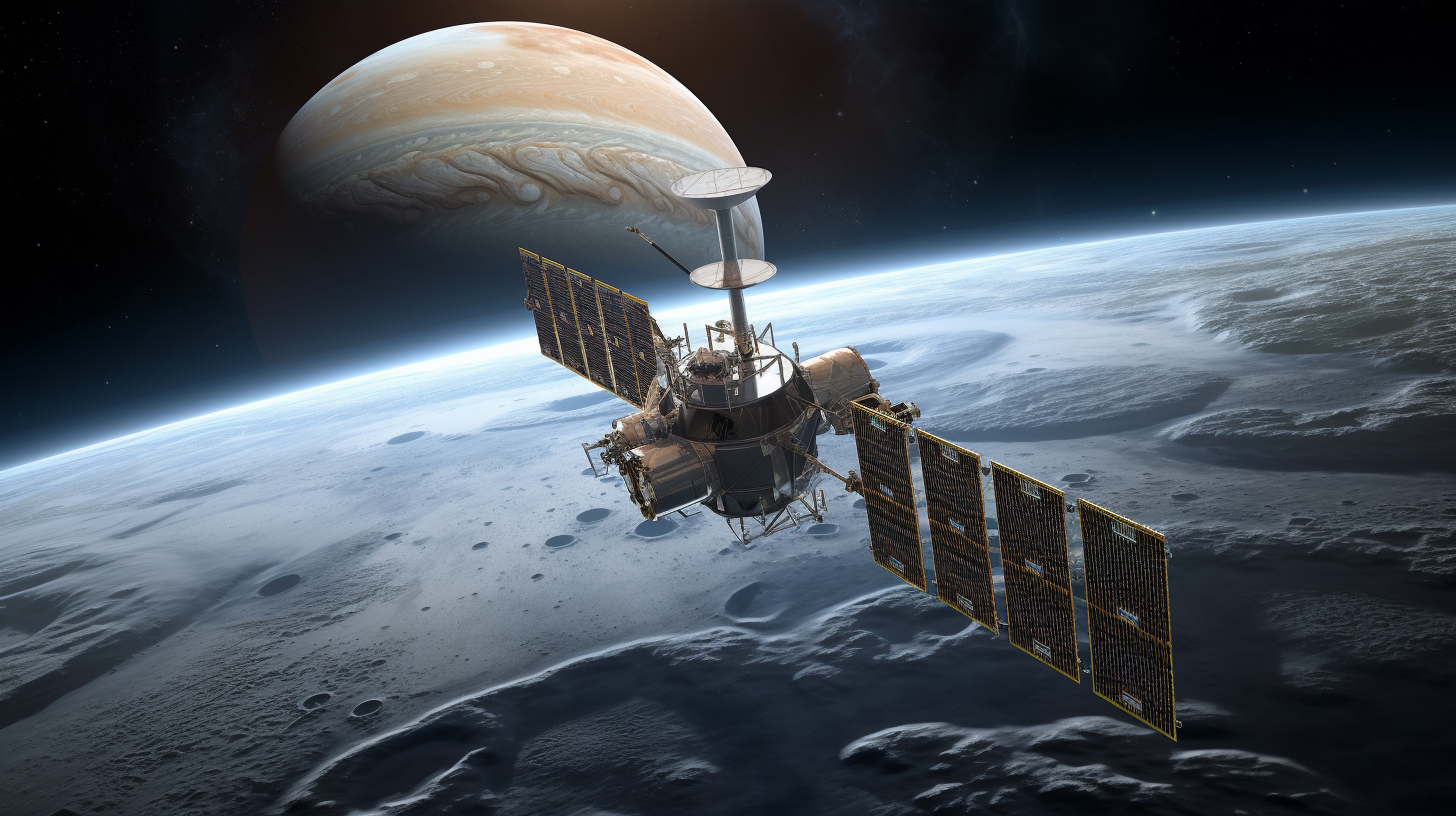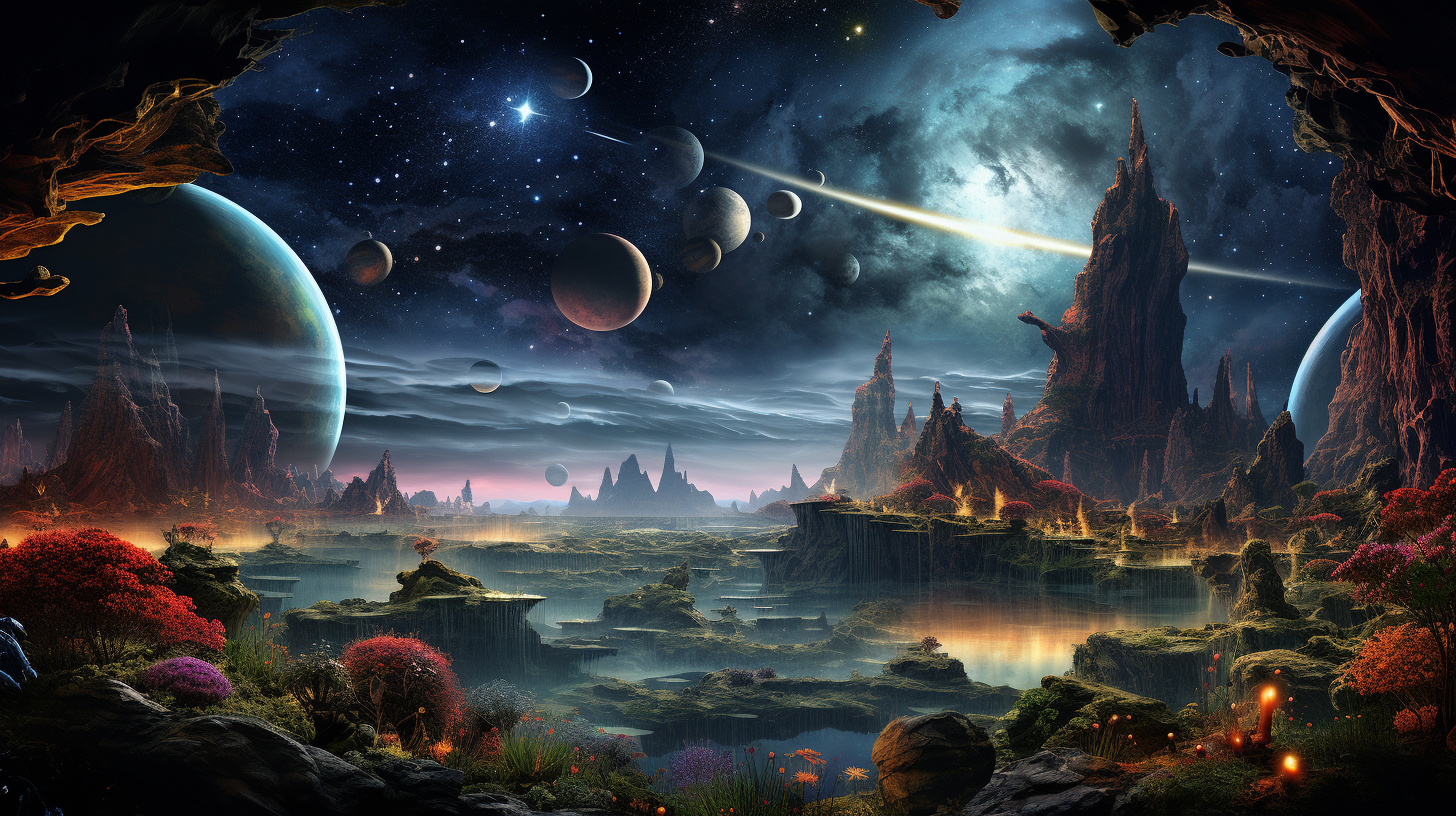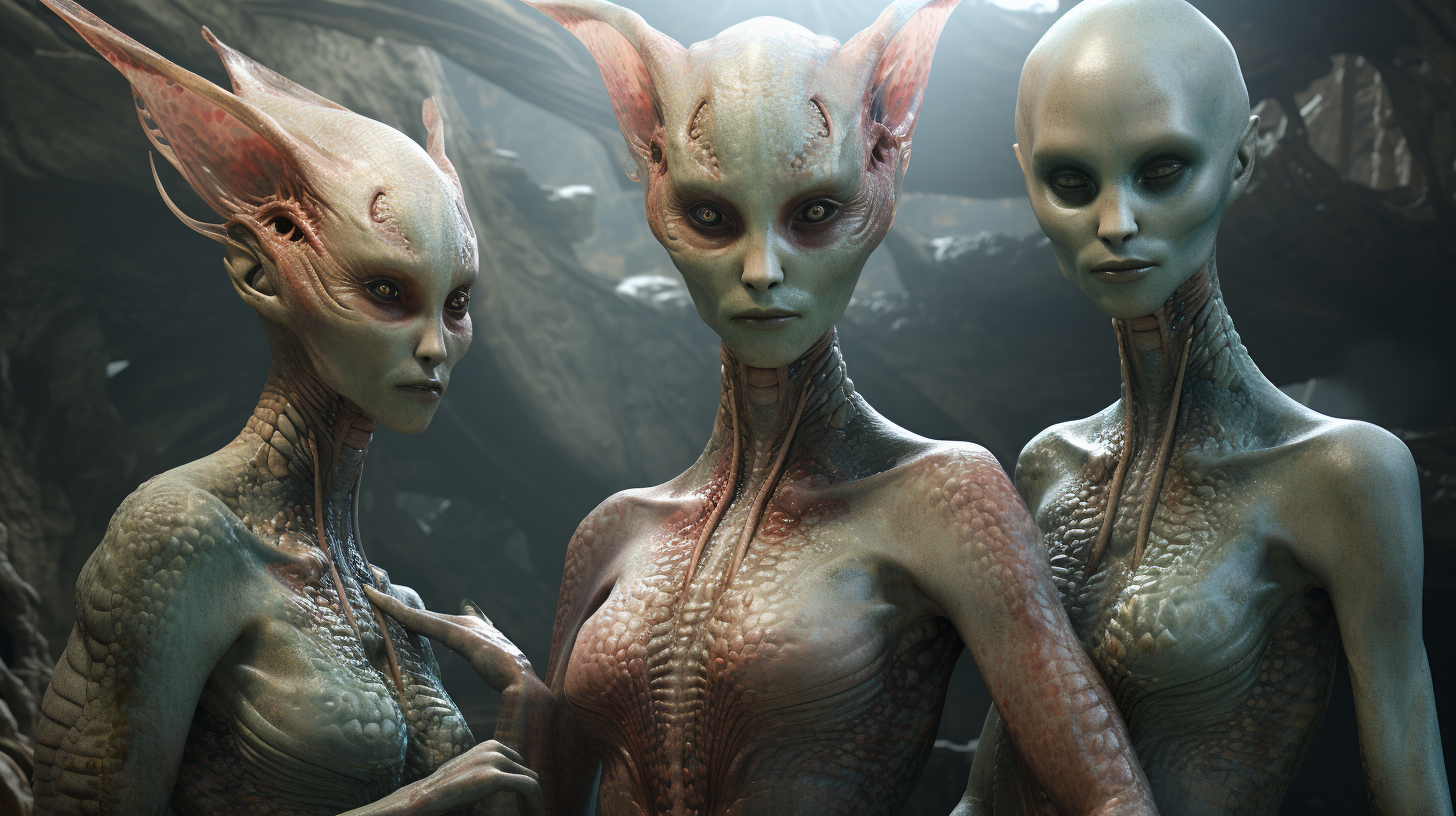Searching For Microbial Alien Life
Microbial alien life forms are hypothetical microorganisms that could exist on other planets or moons, analogous to Earth’s microbes. They may exhibit extremophilic traits, unique biochemistry, versatile reproduction strategies, and robust cellular structures to survive in diverse, often extreme environments. The search for these life forms, particularly on Mars and Europa, involves analyzing meteorites, subsurface water, and extreme Earth environments to understand potential alien life adaptability.
Are we truly alone in the universe, or could microbial alien life forms be our nearest extraterrestrial neighbors? The possibility of microscopic life beyond Earth captivates scientists and space enthusiasts alike, sparking debates and research in astrobiology. This intriguing concept not only challenges our understanding of life but also opens up new avenues for exploration and discovery in the vast cosmos. Well, we’ll be going over:
- What current research suggests about the existence of microbial alien life forms?
- How do scientists search for these microscopic extraterrestrial beings?
- What would the discovery of microbial alien life mean for humanity and our place in the universe?
Let’s dive in and explore the microscopic mysteries of the cosmos!
What Are Microbial Alien Life Forms?
Definition of Microbial Alien Life Forms
Microbial alien life forms refer to hypothetical, microorganism-based entities that could exist on planets or moons other than Earth.
These life forms would be analogous to microbes found on our own planet—tiny, often single-celled organisms that can live in diverse and sometimes extreme environments. Unlike the complex, macroscopic life featured in many science fiction narratives, microbial extraterrestrials represent what scientists believe to be the most probable type of life that might be encountered beyond Earth.
Characteristics of Microbial Alien Life Forms
Microbial alien life forms, if they exist, would likely exhibit a variety of characteristics that enable them to survive in environments vastly different from those on Earth. Some of these characteristics might include:
- Extremophilic Traits: The capacity to thrive in conditions that would be hostile to most Earth-based life, such as extreme temperatures, pressures, or high radiation levels.
- Unique Biochemistry: Metabolic processes that might Use substances that are rare or even toxic on Earth, including different base elements for life such as silicon or arsenic.
- Versatile Reproduction Strategies: Adaptations that allow them to reproduce in the absence of liquid water or under other atypical circumstances.
- Robust Cellular Structures: Cellular components resilient to the challenges posed by their environment, which could include novel membrane compositions or protective mechanisms against cosmic radiation.
By examining these characteristics, we are able to surmise potential survival strategies and adaptabilities that microbial alien life forms could possess.
It’s fascinating to contemplate how life might have solved the puzzle of existence in corners of the universe far removed from the familiar comforts of our own world!
Evidence of Microbial Alien Life Forms
Martian Meteorites as Evidence
In our search for microbial alien life forms, we’ve turned our attention to Martian meteorites. These rocks, which found their way to Earth after being ejected from Mars, provide a tantalizing glimpse into the past conditions of our neighboring planet:
- ALH84001: One of the most famous Martian meteorites that suggests the possibility of ancient microbial life due to the presence of microfossils and organic molecules
- Nakhla Meteorite: Contains hydrated minerals and could potentially hold clues to past microbial life
- Shergotty Meteorite: Shows evidence of shock metamorphism and water-rock interaction that may have supported microbial life
The isotopic signatures and morphological features in these meteorites suggest that Mars had environments capable of supporting life.
Subsurface Water on Mars
Mars’s subsurface water holds the potential for microbial life due to its protection from harsh surface conditions:
- Underground Lakes: The discovery of liquid water lakes beneath Mars’s south polar ice cap using radar data
- Deep Groundwater: Analysis of Martian meteorite compositions and rover data indicating the historical presence of groundwater
- Salt Brines: Resilient microbial life could potentially exist in salt brines that seasonally appear on Mars’s surface
Mars rovers also contribute significantly by analyzing soil samples for signs of organic compounds and other indicators of life.
Extreme Environments on Earth
By studying extreme environments on Earth, we understand what life might look like on other planets:
- Hydrothermal Vents: Microbes thriving in high-temperature, high-pressure, and chemically rich environments found on the ocean floor
- Arctic Permafrost: Organisms living in deeply frozen soil for millennia, offering insights into cryopreservation and life in cold, dry Martian-like conditions
- Acidic Lakes: Microbial communities enduring highly acidic waters, demonstrating how life adapts to seemingly inhospitable conditions
These diverse ecosystems illustrate the remarkable adaptability of microbial life, suggesting that life forms might well exist in the extreme environments of other planetary bodies.
Search for Microbial Alien Life Forms
NASA’s Mars Rover Missions
The quest to find evidence of microbial alien life forms has been a driving force behind NASA’s Mars rover missions. These sophisticated robots are equipped with advanced scientific instruments designed to examine the Martian surface and atmosphere. Significant efforts include:
- Perseverance Rover: Launched in 2020, it aims to seek signs of ancient life, collect samples, and study the planet’s geology and climate.
- Curiosity Rover: Since its arrival on Mars in 2012, has been analyzing soil and rocks for organic compounds, which are the building blocks of life.
- Spirit and Opportunity Rovers: While no longer operational, they provided invaluable information on the past water activity on Mars.
These rovers have been crucial in determining whether Mars could have supported microbial life and where to look for it.
Europa Clipper Mission
Jupiter’s moon Europa has long fascinated scientists with the potential of hosting microbial life in its subsurface ocean. The Europa Clipper mission, set to launch in the 2020s, aims to:
- Conduct detailed reconnaissance of Europa’s ice shell and subsurface ocean.
- Characterize the composition of its surface and identify candidate sites for future landers.
- Investigate the moon’s habitability by analyzing the thickness of its ice shell and searching for subsurface lakes.
Europa Clipper represents a significant step forward in our search for life in the solar system’s icy worlds.

Enceladus Missions
Saturn’s moon Enceladus is another icy world that draws attention in the search for extraterrestrial microbial life. Geysers spewing water vapor and ice particles from its south pole hint at a subsurface ocean beneath the icy crust. Future missions to Enceladus would focus on:
- Sampling the plume ejected from its south polar region for signs of hydrothermal activity.
- Analyzing the moon’s ocean chemistry for evidence of bioessential elements.
- Detecting organic molecules in the ejected plume material that could indicate the presence of life.
While no specific Enceladus missions have been confirmed, these objectives remain a high priority for astrobiological exploration.
Implications and Significance of Microbial Alien Life Forms
Possibility of Life Beyond Earth
Discovering microbial alien life forms would be one of the most profound scientific achievements in human history. It would not only reshape our understanding of biology but also expand our knowledge of the diversity of life forms in the universe.
- Validation of Panspermia Hypothesis: The existence of microbes on other celestial bodies might support the theory that life can be distributed throughout the universe via asteroids, comets, and other celestial bodies.
- Expansion of the Habitable Zone Concept: If microbes can survive in the extreme environments of space, it suggests that life can exist in a wider range of conditions than previously thought.
- Advancements in Astrobiology: Microbial life forms could provide invaluable information about the adaptability and resilience of life, steering future research and experiments in astrobiology. By uncovering the secrets of life’s adaptability and resilience, we can better comprehend our place in the cosmos and the potential for life in environments once considered uninhabitable.
Impact on the Search for Extraterrestrial Intelligent Life
The discovery of microbial life has direct implications for the hunt for more complex, intelligent extraterrestrial beings.
- Redefining the Search Parameters: Current search strategies may be broadened or refocused based on the characteristics of the newly discovered microbial life.
- Technological Innovation: New tools and technologies might be developed to detect signs of intelligent life that share traits with microbial extraterrestrials.
- Philosophical Implications: Finding simpler forms of life would fuel philosophical debates about the likelihood and nature of intelligent extraterrestrial civilizations.
These findings would provoke profound questions about the evolution of intelligent life and whether our search methods are aligned with the kind of life forms we are likely to encounter in the boundless expanse of the universe.
Conclusion
Discovering microbial alien life forms promises to be a monumental leap in our quest for knowledge. It’ll not only challenge our preconceived notions about life’s possibilities but also spur us on to innovate and refine our exploratory techniques. As we stand on the brink of potentially groundbreaking discoveries, we’re reminded that the universe is far more complex and diverse than we’ve ever imagined. Our journey into the cosmos is just beginning, and the detection of even the smallest life forms beyond Earth would be a transformative moment in human history, igniting curiosity and wonder about our place in the vast expanse of space.





